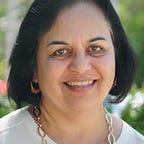When our heroes are also women
Ever since I was a young girl, whenever I had any sort of mishap, physical or emotional, my mother would say, “you are the Rani of Jhansi, you don’t cry, you get up, dust off and keep going.” I didn’t even know who the Rani (hindi for Queen) of Jhansi was at the time but I knew the battle plan.
Manikarnika Tambe, the Rani of Jhansi, was born in 1828, and received an unconventional education for the time, learning to read and write, ride a horse, shoot and wield a sword. She was widowed in 1854, becoming the Regent of Jhansi but the British, exercising the doctrine of lapse, annexed her kingdom. Following a complex set of events, she resumed her rule in 1857. However, soon after in 1858, British forces attacked Jhansi Fort to reclaim the city. Upon realizing the futility of her defence, she managed to escape and, with an army of 14000 soldiers, joined the larger war of independence. She was the only woman leader who fought in the war and eventually died on the battlefield. Brave, fearless, resourceful and undeterred- she was my hero.
Over the ages, as memorialized in epic poems, a hero was a warrior who either fought an enemy, or went on an adventure, where he surmounted great challenges, defeating man and beast along a perilous journey, and returned home victorious to bring glory to his people and land. Heroes were depicted as extraordinarily gifted individuals who, with their ingenuity and courage, vanquished the undefeatable. These were the people who aspired to dare mighty things. They were held in great esteem and as examples for people to emulate.
Hector, in the Homer’s epic, The Iliad says:
“Let me not then die ingloriously and without a struggle, but let me first do some great thing that shall be told among men hereafter.”
Heroes, both in myth and in reality, are a product of the prevailing culture and embody its most valued attributes. Until the last couple of centuries, colonizing new territories and conquering neighboring lands was the most important achievement for societies to demonstrate their dominance. As such warriors from Alexander the Great to General Patton and explorers from Marco Polo and Christopher Columbus to Edmund Hillary captured people’s imagination.
However as societies stabilized, in periods between wars, they focused on developing their capabilities and institutions to ensure the welfare of the people. Arts and science, technology and industry all flourished and advanced. The new heroes were scholars, scientists, artists and musicians. Engineers and technologists who build ingenious devices and captains of industry and enterprise who made them available to everyone were admired and respected. The scourges that destroyed people’s lives were no longer marauding armies, they were the invisible attackers that laid populations to waste by disease. Alexander Fleming who discovered penicillin, and the vaccine warriors, Jenner, Pasteur, Salk and Sabin were the heroes that saved humanity from disease and pestilence.
But where in this pantheon are the women? A few intrepid women explorers, a handful of scholars, scientists and artists and barely any engineers. If heroes are a reflection of the culture of society, what does this tell us? It was not that there weren’t capable or interested women — you cannot bin half the population in the incompetent bucket.
In the past, women did not have access to education but even after that changed in the last century, the expectations of society did not. Women were still expected to be mainly housewives and mothers. When Dorothy Hodgkin was awarded the Nobel Prize for her work on X-ray crystallography, journalists could not even bring themselves to call her a scientist.
Barbara McClintock, another Nobel Prize winner, got little support when she was at University of Missouri and was told she would be fired if she got married. Every woman who has worked in a field dominated by men, has stories of how they were told they were depriving men of jobs, mistaken for support staff, and how they had to fight for the resources, the pay, the promotions they deserved.
This year, in a first, two women, Jennifer Doudna and Emmanuelle Charpentier won the Nobel Prize for Chemistry. Their work on CRISPR, more than anything else in recent history, has the potential to change the future of humanity. Watching the Perseverance Rover landing on Mars, you could not help being spellbound by the confident and competent, Swati Mohan as she took us through the final phase. Prime Minister Jacinda Ardern steered New Zealand through the pandemic with an informed approach and a firm hand without any panic or pandemonium. And there is Cathie Wood, the unassuming financier whose investment funds made record returns last year and have since grown tenfold.
Slowly and surely, things are changing. The number of women who won the Nobel Prize in the last twenty years is almost the same as that in the previous hundred. Women are claiming their place in every field from politics to finance, arts and sciences, technology and industry. While the numbers are still small, they are growing and the new generation of women is bringing to light the unseen and unspoken webs that held them back.
If heroes mirror society, the faces that are now reflected are of all colors and gender, a diverse lot with different ideas and perspectives. And they look a lot happier since they are not being thwarted in the pursuit of their dreams. How can that not be a good thing?
